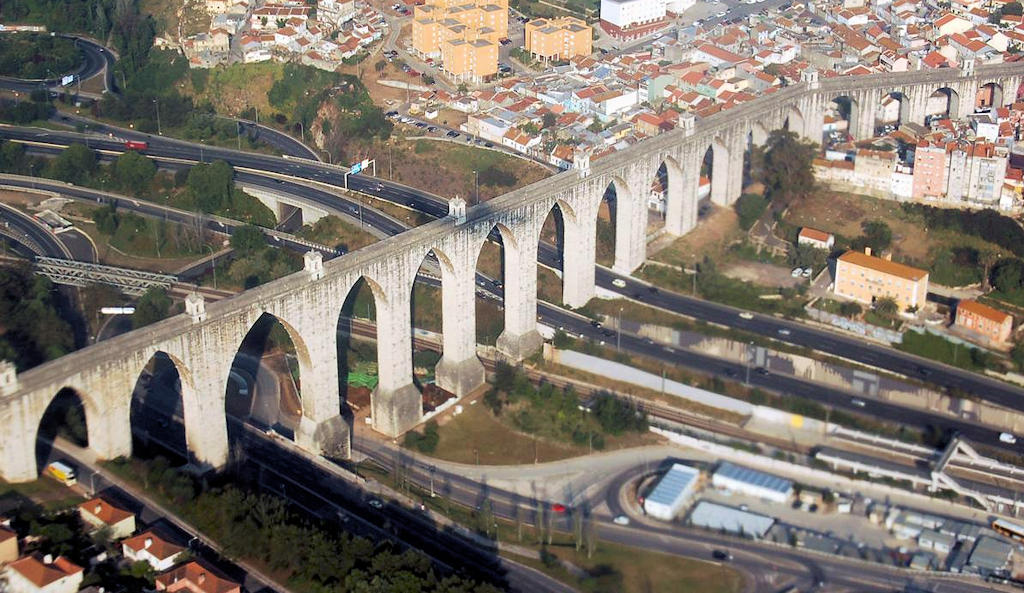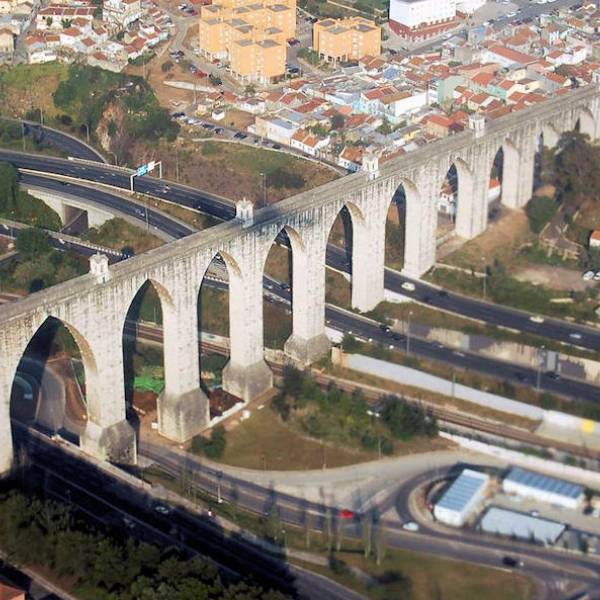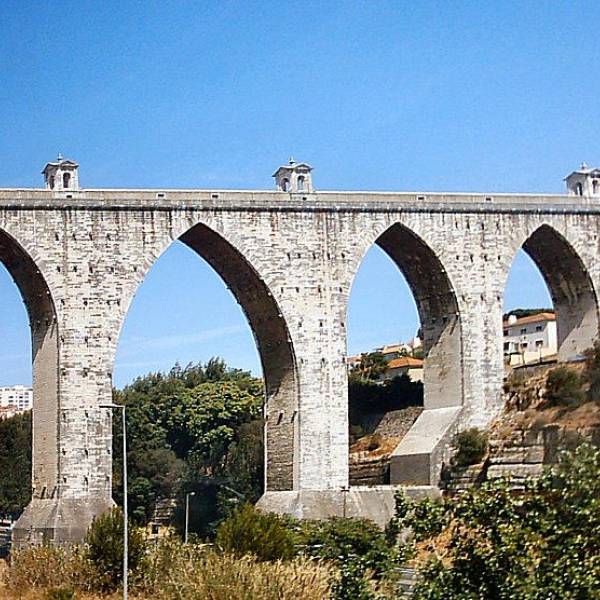Since the early settlements in the Lisbon region, the scarcity of clean drinking water was a constant challenge. Despite the presence of the Tejo River, its water was unfit for consumption due to contamination from the nearby sea, resulting in unsuitable salinity levels. The only area in Lisbon with natural water springs was the Alfama neighborhood. As the city expanded beyond its medieval walls, a chronic water supply deficit emerged. The idea of utilizing the waters from the Carenque River Valley near Belas gained traction. These waters were initially tapped by the Romans, who had built a dam and an aqueduct in the area.
In 1571, Francisco de Holanda proposed to King Sebastian the establishment of a water supply network for Lisbon in his work "Da Fábrica que Falece à Cidade de Lisboa". This network, which had already been initiated by the Romans, considered the remains of the ancient aqueduct for the passage of the Águas Livres to Lisbon. Later, during the reign of King João V, a special tax was created to fund the construction of the aqueduct. This tax was conflated with the royal water tax, which also applied to meat and wine and had existed since the time of King Manuel I. The revenue from this tax was previously used for other sanitation works in the country.
After its completion in 1748, a new network of fountains and water sources powered by gravity, such as the Chafariz da Esperança, was constructed throughout the city. The aqueduct's capacity was continuously expanded to meet the growing water demands driven by the city's demographic growth. Several extensions, particularly upstream, were made to bring more water to the aqueduct, resulting in a total length of 58,135 meters of underground and elevated galleries.
The public pathway on top of the aqueduct was closed since 1837, partly due to the crimes committed by Diogo Alves, also known as "o Pancadas," a criminal who robbed his victims and threw them off the arches, simulating suicides. He was eventually captured, convicted, and became the last person to be executed in Portuguese history.
Lisbon.vip Recommends
The Águas Livres Aqueduct begins at the Mãe d'Água Velha, which collected water from the Água Livre springs in Belas, and concludes at the Mãe d'Água das Amoreiras Reservoir after a journey spanning 14,174 meters.
The extensive network of water collection and conveyance, including all its tributaries, expanded to a total of 47 kilometers, drawing water from 58 springs, many of them located in the Carregueira mountain range. When considering the additional 11 kilometers of distribution pipes within the city, the entire system reaches a total length of 58 kilometers.
The Águas Livres Aqueduct stands as a testament to engineering brilliance and the quest to overcome water scarcity. It represents a vital piece of Lisbon's history and showcases the ingenuity of generations past in their efforts to provide a fundamental resource to the city's inhabitants. Today, it stands as a remarkable architectural marvel, reminding us of the indomitable spirit of human innovation and the enduring legacy of our ancestors.
Map View





